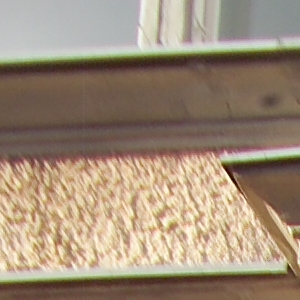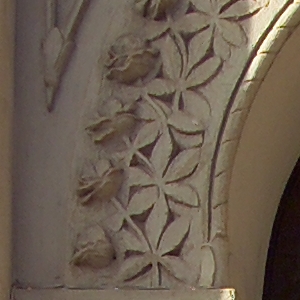
Nikon introduced the 12-24/f4 DX zoom to provide digital shooters with a wide-angle zoom (18-36mm equivalent), and did a great job. The lens has been favourably reviewed multiple times, and not without reason. I've been very satisfied with mine, and have used it on Nikon D100 as well as D200.
The 12-24 is a DX format lens, that is, it is designed to cover the roughly APS-C sized sensor Nikon has used in its digital SLRs, up to the new D3. However, it has been reported by more than one reviewer that the lens covers the 135 format in the range 18-24mm.
The D3, while a very interesting camera, is something a mere hobbyist cannot afford as new. However, there are two digital bodies in the Nikon F mount with a "full frame" sensor, and a roughly equivalent amount of megapixels: Kodak 14n and its successor SLR/n. Both are "old" cameras, considering how fast digital products age, have been discontinued, and will not be supported by Kodak in the near future. Not surprisingly, prices of used bodies have come down significantly, and a used 14n can nowadays be purchased for hundreds, not thousands, of dollars.
So, after laying my hands on one of these beasts, one of the first things on my TODO list was to check how well the 12-24 actually works on 135 format sensor. My findings are summarised below.
Disclaimer: These tests were not made with scientific rigour, far from it. Take what I say for what it's worth, and run your own tests if possible.
Three images were taken of the same subject at 18mm; at apertures 4, 8, and 11. Images were taken with a handheld camera, so positioning was not exactly the same between images, but sufficiently close to allow for comparisons to be made. Also, the shutter speed was at least a stop below the 1/focal length rule of thumb in each case.
From each image, three 100% samples of 300x300 pixels are presented. One from the top left corner, one from the center and one from between these two.
The images are as they came from the camera (Kodak PhotoDesk at default settings): merely a format conversion was made. The crops were made from uncompressed TIFF files and saved as 100% quality JPEGs.
 |
| Door of the Botanical Museum in Helsinki |
| 18mm, f/4 |  |
 |
 |
| 18mm, f/8 |  |
 |
 |
| 18mm, f/11 |  |
 |
 |
The 100% crops from the center of the frame serve, in my opinion, as proofs that the test shots were reasonably well taken even if they were handheld: the "HÄLYTYS/ALARM" sticker is well enough defined in each.
However, what is interesting -- and sad -- is the no matter what the aperture, the corner of the image is terribly blurred, in my opinion to the point of being unusable for more serious uses than web galleries.
So, the corners of the image at 18mm are unusable. But perhaps at longer focal lengths the story is different? After all the lens vignettes progressively less and less as we approach 18mm from wider settings.
Unfortunately not. The corners are blurred also at 20 and 24mm; one example of both below, taken at f/8. The lens does not adequately cover the whole 135 format at any focal length.
 |
|
||
 |
|
Below is an example from another picture, showing the very abrupt transition between acceptable and unacceptable quality (@ 18mm).
 |
While vignetting disappears at about 17mm, the edge performance just is too poor for anything more serious than web-sized images at any focal length. For prints one would need to trim several hundred pixels from each edge, severely reducing the effective focal length. Inside the DX area the lens performs well, but outside it, it isn't too hot. And I'm not really the most exacting person in the world.
Bjørn Rørslett informed me that what I was seeing is due to the interaction between the Kodak's sensor and the fact that the lens coverage simply does not extend far enough. However, on film the lens is usable from 18 to 24mm. Also, it should be noted that each digital sensor is a different beast and no conclusions should be made about how the lens will behave on the D3 based on this combination.
Nevertheless, I still like my 12-24 as much as before: having it work terrbily well on "full frame" Kodak would have been an unexpected bonus, and I certainly haven't lost anything. Just keep it mounted to a DX body, and everything works perfectly.
Copyright (c) Hannu Mallat < hmallat at gmail dot com > 2007. Last updated Aug 06, 2007.
Acknowledgements to Bjørn Rørslett for feedback.